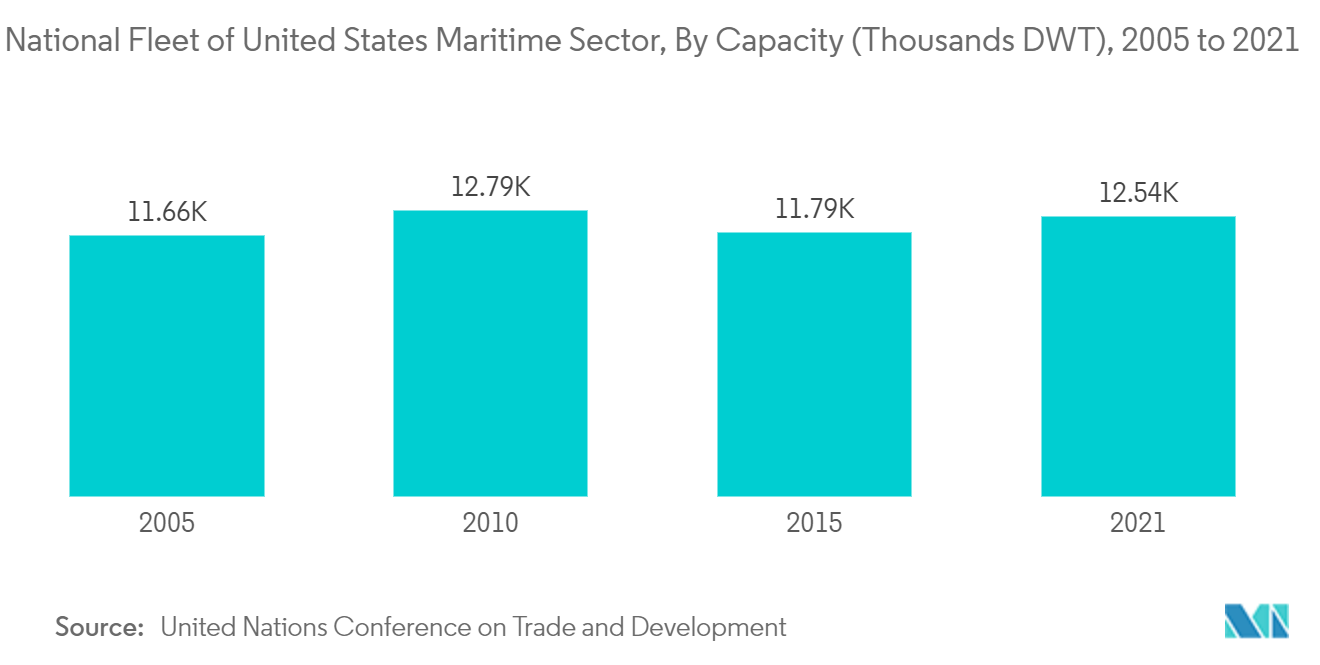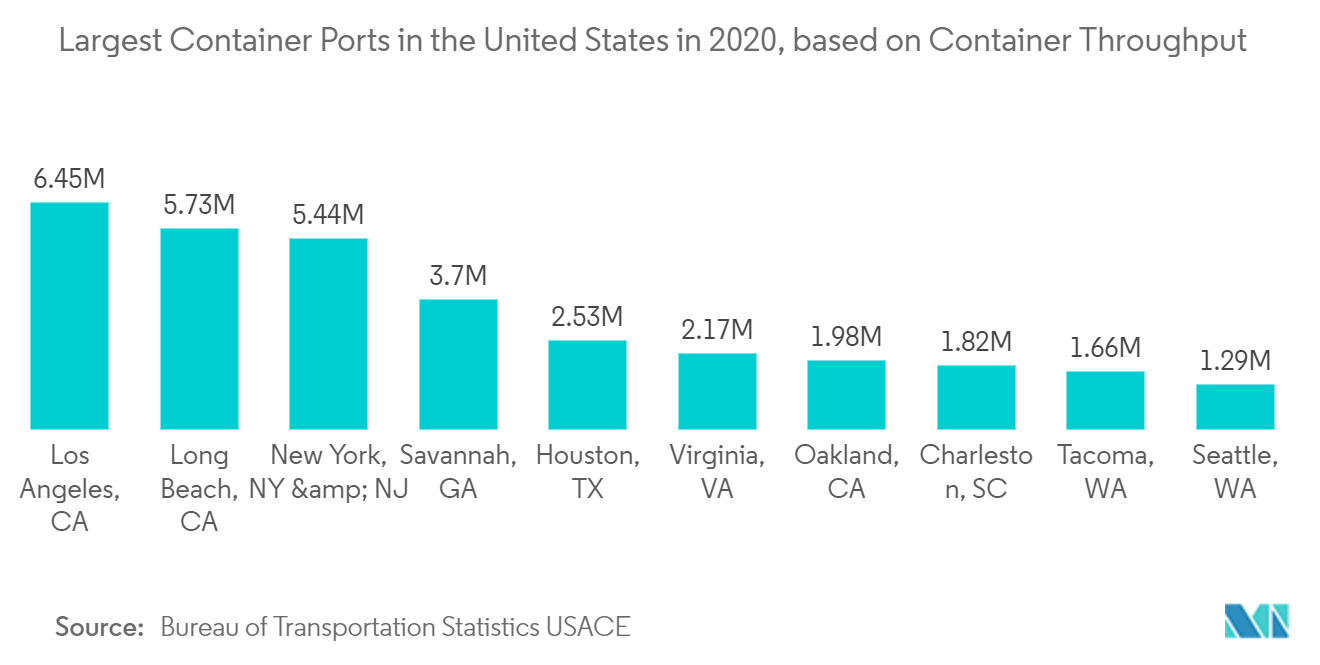Market Trends of North America Container Terminal Operations Industry
This section covers the major market trends shaping the North America Container Terminal Operations Market according to our research experts:
Initiatives towards Greener Industrial Port Activities
The switch to greener energy is currently underway throughout the world. It is anticipated that between 2030 and 2050, an average annual investment of USD 40 to USD 60 billion will be needed to reduce shipping emissions by half. The majority of this will be used to create alternative fuels like ammonia, hydrogen, and methanol, as well as new land-based infrastructure for storage and bunkering.
Major effects of the energy shift on ports are evident as reduced oil trading means less money to store and distribute fossil fuels. Ports are consequently seeking to create new markets and value-added services in order to get ready for a future without carbon fuels (The Conversation, 2021 and Manners-Bell, 2021). Further, the government and companies are trying to achieve their goals for investing in environmental sustainability. (IAPH-WPSP, 2021). These include facilities for producing alternative energy, importing alternative fuels, and bunkering and storing them to enable delivery. Additionally, ports have benefited from incentives for foreign investment and green infrastructure recovery initiatives, respectively.

Smart Port is a Growing Trend in Port Terminal and Operations Market
In the port terminal and operation business, smart ports are becoming more popular. The adoption of smart technology by harbor authorities is being driven by the growing need to reduce operational costs, collect real-time information, and make data-driven choices at port facilities. A typical port is converted into a smart port using several technologies, including Artificial Intelligence (AI), the Internet of Things (IoT), blockchain, and process automation. To convert the traditional infrastructure into a digital one, these are either deployed separately or in combination. In comparison to traditional ports, the smart port has advantages such as lower operational costs, fewer disruptions caused by people, wiser decision-making, and more consistent performance. All of these advantages lead to increased production, which opens the door for a clear picture of Port 4.0.
The pressure on the yards and other stakeholders has increased due to the higher rate of global trade growth, which has increased vessel size, cargo volumes, and port traffic. The internal efficiency at the operational level at the ports is impacted by this added demand. By incorporating smart technologies, operational processes can be optimized while being more efficient and spending less on logistics. The installation of sensors at the ports aids in the scheduling of maintenance tasks, the monitoring of infrastructure, and the optimization of several other operational tasks. Therefore, throughout the projected period, the desire for operational efficiency at ports may fuel the expansion of the smart port market.


